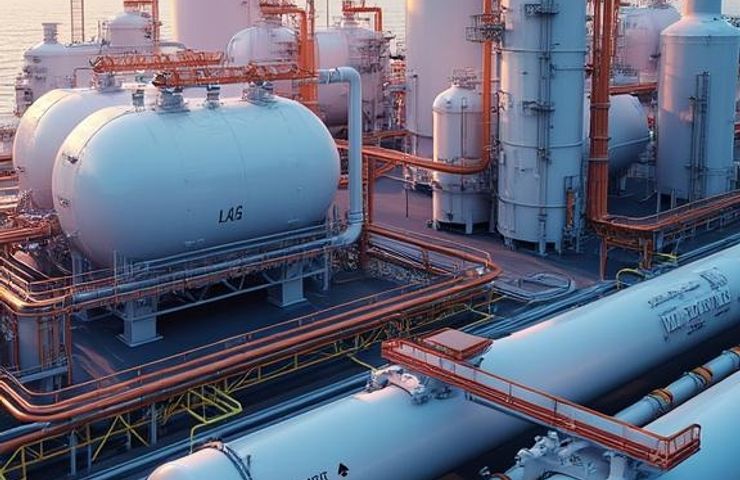
Baker Hughes Bets Big on Hydrogen Infrastructure with $13.6B Chart Industries Deal
July 31, 2025Baker Hughes just made a bold move that’s turning heads across the energy world—dropping a massive $13.6 billion to buy out fellow U.S. player Chart Industries. This all-cash deal, announced on July 29, 2025, isn’t just another mega-merger. It’s a strategic, future-focused pivot that could reshape global momentum around hydrogen production, LNG infrastructure, and the race toward industrial decarbonization.
This is More Than Just a Merger
Let’s be clear—this isn’t about two companies bulking up just for size. It’s about combining muscle and brainpower. We’re talking high-end hydrogen storage, cutting-edge cryogenic systems, and next-level digital lifecycle services. Baker Hughes will fork over $210 per share for Chart—a premium price tag that shows just how much they believe in Chart’s position in clean energy and industrial gas tech.
And they’re not strangers to each other. Baker Hughes and Chart have already teamed up in big ways when it comes to hydrogen and LNG infrastructure. This deal just takes that partnership to the next level, bringing together deep technical know-how and a shared drive to help heavy industries move into a lower-carbon reality.
Connecting the Entire Hydrogen Pipeline
Chart brings serious expertise in hydrogen liquefaction and storage—especially the ultra-cold cryogenic kind—while Baker Hughes brings power through its rotating machinery and large-scale project management. This combo gives them full visibility and capability across the board: from electrolysis and transportation infrastructure all the way to hydrogen refueling and system monitoring. It’s not just vertical integration—it’s a full-blown ecosystem tailored for the era of zero-emission technology.
A Broader Toolbelt for Industrial Decarbonization
Chart doesn’t just play in hydrogen. It also has a big footprint in high-demand, low-volatility sectors—think metals, chemicals, even food. All of those industries are under the gun to decarbonize fast. With this deal, Baker Hughes gets a passport into these stable, high-margin markets that increasingly need complex gas handling solutions under the sustainable energy umbrella.
CEO Lorenzo Simonelli has been pretty clear about where Baker Hughes is headed. The company is leaning hard away from its oilfield past and investing in tech that’s built to last—both financially and environmentally. With this acquisition, they’re also dialing up their presence in digital service platforms, which help track carbon, predict equipment failures, and keep things running cleaner and sharper.
Big Cost Savings—and Bigger Industry Signals
No surprise here—cost efficiencies are part of the plan. The companies expect to see around $325 million in annual savings within three years by tightening up operations, supply chains, and R&D. That frees up cash and speed, which is critical as the hydrogen infrastructure and clean ammonia markets get more crowded and competitive.
But maybe more interestingly, this move puts pressure on everyone else. Baker Hughes is raising the stakes. Other energy tech firms are now likely eyeing partnerships—or full-blown acquisitions—just to keep up in the increasingly fast-paced race toward low-carbon dominance.
What This Means for Workers and Local Communities
The merger will ripple through Chart’s global network: 65 factories and countless service hubs. While there haven’t been any official announcements about job cuts, mergers can be messy. That said, the increased scale and broader project pipeline could spark job growth and community investment—especially in areas active in hydrogen production and LNG buildout.
On the money side, Baker Hughes has already locked in bridge financing to make the deal happen and says they’re set on keeping their investment-grade credit rating intact. The deal is expected to close by mid-2026, pending the usual regulatory hurdles and shareholder approvals.
The Bigger Picture: What’s Next in Energy
Baker Hughes is flipping the script. A company that’s been around since 1907 is now banking on a future powered less by oil and more by innovation. And this isn’t just a win for them—it’s a signal of what the next phase of industrial energy might look like: the convergence of heavy-duty engineering and agile, technology-driven solutions in the name of sustainable energy.
In a world where clean hydrogen, fuel cell tech, and integrated LNG technology are rapidly becoming cornerstones for global power, heat, and transport systems, this massive deal could go down as more than a smart business move—it might just turn out to be vital.
About the Companies
Baker Hughes, based in Houston, is a global energy tech leader, delivering equipment and cutting-edge services across the energy sector, with a growing focus on decarbonization and digital tools.
Chart Industries, headquartered in Georgia, is a top provider of cryogenic and gas processing technologies—especially in hydrogen, LNG, and carbon management—helping industries shift toward cleaner operations.



 With over 15 years of reporting hydrogen news, we are your premier source for the latest updates and insights in hydrogen and renewable energy.
With over 15 years of reporting hydrogen news, we are your premier source for the latest updates and insights in hydrogen and renewable energy.